Skype: neodalle-travel
Tel: +86 135 7447 2266
E-mail: sales@visitaroundchina.com
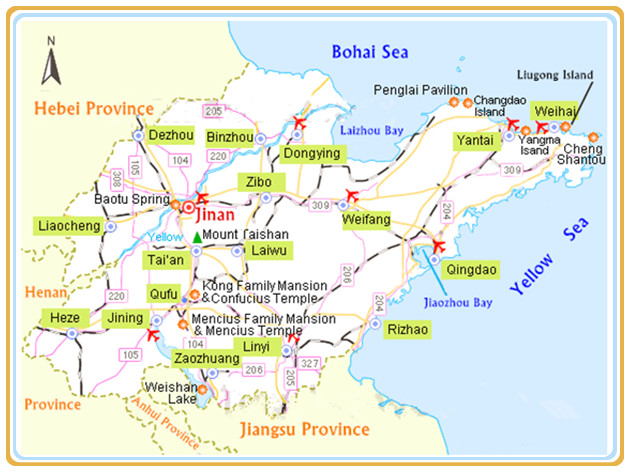 Shandong is the northernmost province in eastern China on the lower reaches of the Yellow River. It borders Hebei, Henan, Anhui and Jiangsu respectively from north to south, close to Bohai and Huanghai seas to the east and overlooks the Korean Peninsula and the Japan Archipelago across a vast stretch of sea.
Shandong is the northernmost province in eastern China on the lower reaches of the Yellow River. It borders Hebei, Henan, Anhui and Jiangsu respectively from north to south, close to Bohai and Huanghai seas to the east and overlooks the Korean Peninsula and the Japan Archipelago across a vast stretch of sea.Shandong Facts
Chinese Name: 山东 (shān dōng)
Abbreviation: Lu 鲁
Location: in the east of China
Area: 158,000 square kilometers
Population: 100,702,100
Administrative Division: 16 cities (Jinan, Qingdao, Zibo, Zaozhuang, Dongying, Yantai, Weifang, Jining, Tai’an, Weihai. Rizhao, Linyi, Dezhou, Liaocheng, Binzhou, Heze); 57 districts; 27 county-level cities; 53 counties
Cities in Shandong
| Binzhou | Dezhou | Dongying | Heze | Jinan | Weifang | Jining | Laiwu Zibo |
| Liaocheng | Linyi | Qingdao | Qufu | Rizhao | Tai'an | Weihai | Zaozhuang |
Shandong, with a history of more than 5,000 years, is considered one of the birthplaces of Chinese civilization. It has also been the home of a large number of historical figures, whose important influences are still evident in contemporary China. Confucianism, founded by Confucius, the great thinker, educator and statesman is the pillar of traditional Chinese culture and has exerted great influence in the world.
What to see in Shandong?
Shandong is also blessed with beautiful landscapes. The most famous scenic spots are Taishan Mountain, Mt. Laoshan and the seaside of the Jiaodong peninsula. In 1987 and 1994, Taishan Mountain, the Temple and Cemetery of Confucius and the Confucius Mansion in Qufu were inscribed on the World Cultural and Natural Heritage List by UNESCO. Here lists top attractions in Shandong...Shandong Attractions
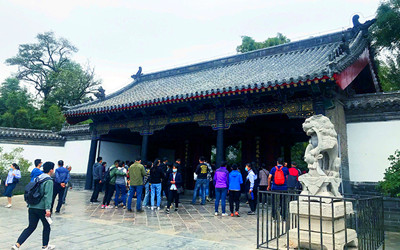 |
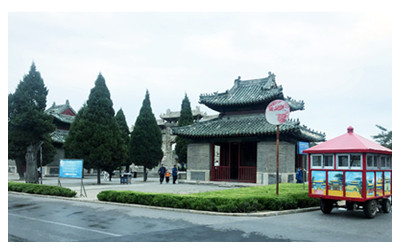 |
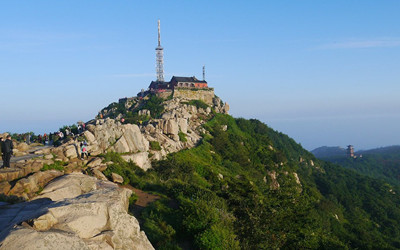 |
| Confucius Family Mansion | Qufu Confucius Temple | Taishan Mountain |
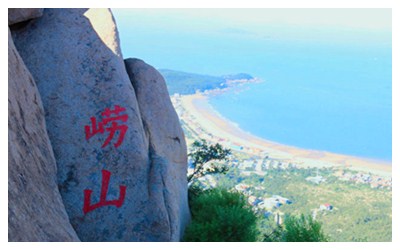 |
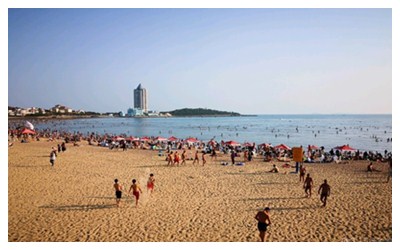 |
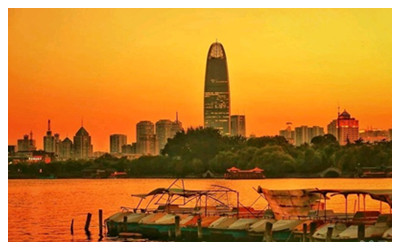 |
| Laoshan Mountain | Qingdao Number One Bathing Beach | Daming Lake Park |
When to visit Jinan?
Shandong has a warm-temperate monsoonal climate. It has hot summers with centralized rainfall as well as short springs and autumns with an average annual temperature ranging from 11ºC to 14ºC. The temperature diversifies more dramatic from east to west than from the south to north.
Best Time to Visit Shandong: Based on Shandong climate, spring, summer and autumn are the best time to visit Shandong, especially from May to October. In spring and autumn, there are beautiful flowers and the temperature is comfortable. In summer days, you can enjoy beach fun in coastal areas. The winter in Shandong is cold without outstanding scenery....Shandong Weather
How to reach Shandong?
Shandong is on the lower reaches of the Huanghe River (Yellow River) in the eastern part of the North China Plain. The Shandong Peninsular borders on the Bohai Sea in the northwest and the Yellow Sea in the northeast and south, with a coastline running about 3,000 kilometers. Shandong transportation would offer you information about the conditions and development of varying transportation ways in Shandong including aviation, highway, railway and waterway, and subway...Shandong Transportation
Shandong Travel Tips
Shandong is one of the ancient Chinese culture centers. Confucius once developed Confucianism in Shandong, which is the cornerstone of China's culture and has been spread around the world. You can learn about Confucius' life and culture theory in the Temple of Confucius in Qufu which is an ancient architectural complex second only to the Forbidden City in Beijing. The charming legends and historical stories cover the mountains of Shandong with a layer of mysterious veil. The Taishan Moutain was regarded as the holy place where many emperors offered sacrifices to heaven and Laoshan Mountain was said to be the home of immortals.
Also, Shandong boasts long coastlines and fancy views in Jaodong peninsula, a wonderful place to avoid summer heat and taste fresh sea food. Shandong cuisine famous at home and abroad for its fresh, salty, crisp and tender taste is also a must-try.
Shandong Food
Shandong Shopping
Shandong Map
Shandong Festivals
 Ask Questions ?
Ask Questions ?